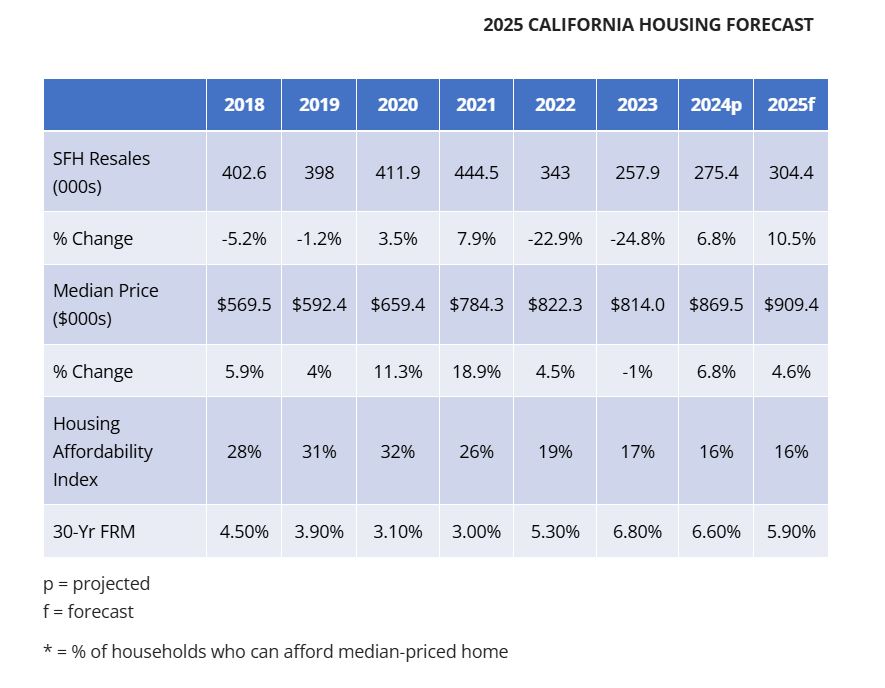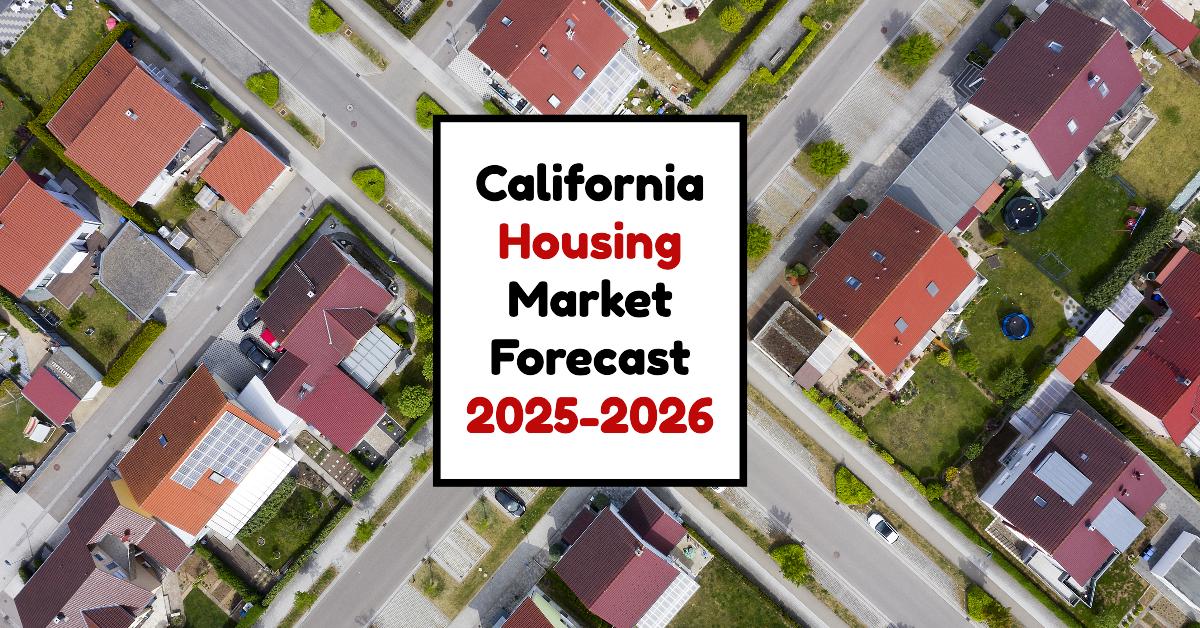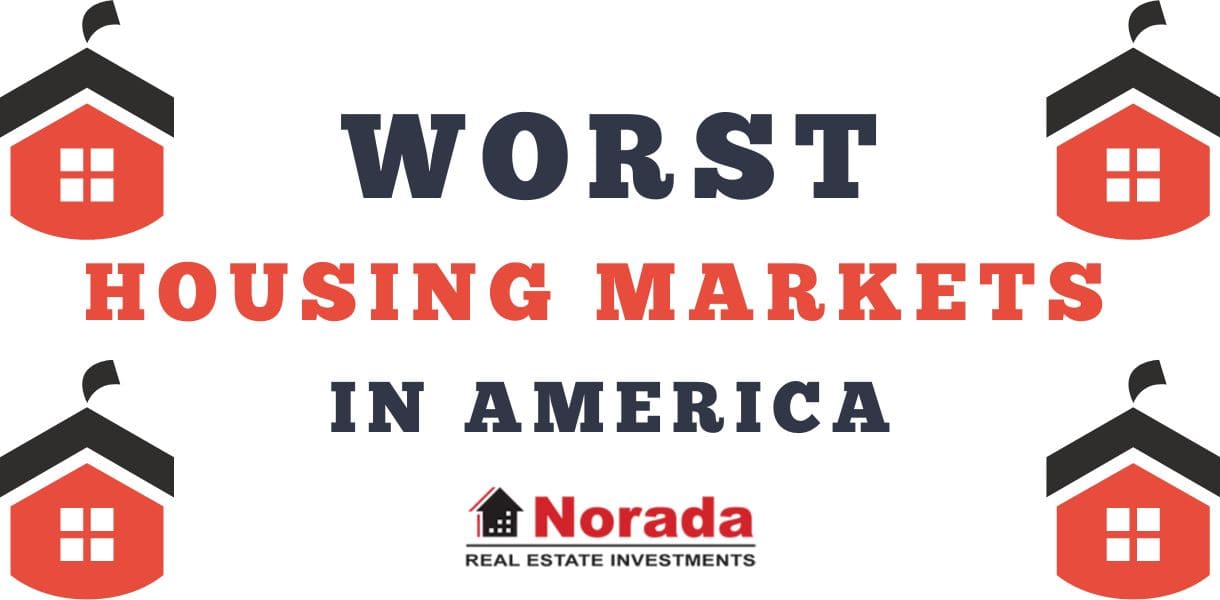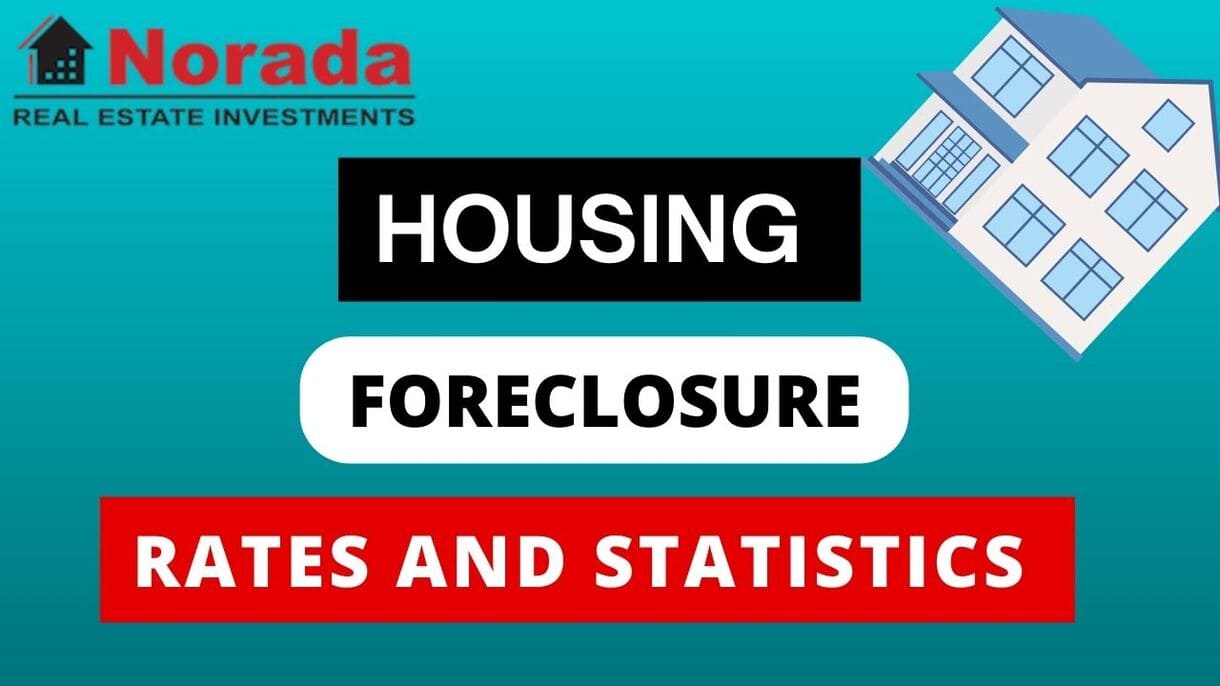The current California housing market trends are showing a mixed bag, but overall, the market is doing better than last year. While challenges persist, particularly in affordability, we are seeing increases in both sales and median home prices, as of the latest data from the California Association of Realtors (C.A.R.).
The market is definitely more active compared to late 2023. This points to a potential upswing in the market in the coming year, especially when the spring home buying season rolls around. Let's dive into the details to understand what's really happening in the Golden State's real estate world.
Current California Housing Market Trends: What You Need to Know
Home Sales
Okay, so let's talk about home sales. According to C.A.R., in December 2024, there were 268,180 existing, single-family homes sold at a seasonally adjusted annualized rate. This is basically a fancy way of saying if the December sales pace held steady all year, that’s how many homes would be sold. This number is slightly up from November (0.1%) and shows a significant 19.8 percent increase compared to December 2023.
While this jump seems impressive, it’s worth noting that December 2023 saw sales hit their lowest point since late 2007. Think of it as a rebound – we're getting back to a healthier market. For the whole of 2024, sales were up 4.3% compared to 2023. This is the first annual increase in three years.
Here’s a quick rundown:
- December 2024: 268,180 homes sold (annualized rate)
- Change from November 2024: Up 0.1%
- Change from December 2023: Up 19.8%
- Overall 2024 Sales: Up 4.3% from 2023
What does this mean? Well, for starters, the California housing market is not stagnant. People are buying homes, and the pace is picking up. But we still have some way to go before we see sales that are at pre-COVID levels. Personally, I think this shows that there's pent-up demand, but affordability concerns are still a hurdle for many people.
Home Prices
Now, onto home prices, which is always a hot topic. The statewide median home price in December 2024 hit $861,020. This is a 1.0% increase from November and a notable 5.0% jump from December 2023. This means that, despite some economic uncertainty, home values in California are not decreasing; they're steadily going up.
The median home price in California has been increasing on a year-over-year basis for 18 months straight now! This is not surprising since we had such low inventory last year and buyer demand always manages to pick up in the spring.
Here’s a quick look at the key numbers:
- December 2024 Median Price: $861,020
- Change from November 2024: Up 1.0%
- Change from December 2023: Up 5.0%
- Overall 2024 Median Price: Up 6.3% from 2023
What I'm seeing is that even though mortgage rates are still high, and there were wildfires in Southern California that have affected the market, prices are still rising. I think it's partly because of a lack of homes on the market. This also highlights the disparity in the market; higher-end sales are doing better than the lower price ranges which is having a positive impact on the statewide median price.
Housing Supply
Let's move on to housing supply. This is basically about how many homes are up for sale. The Unsold Inventory Index (UII), which tells us how many months it would take to sell all the homes currently on the market at the current sales pace, was at 2.7 months in December 2024. That’s down from 3.3 months in November, but slightly up from 2.6 months in December 2023.
What this shows is that the supply of homes is still pretty tight. There are not a whole lot of homes for sale relative to the number of buyers who are still looking to buy. This is part of why prices continue to increase. The slight increase from the previous year does indicate that there are more homes for sale, but the number is still very low compared to previous years.
Here's a closer look:
- December 2024 UII: 2.7 months
- Change from November 2024: Down from 3.3 months
- Change from December 2023: Up from 2.6 months
My thoughts on this are that the tight inventory continues to be a major factor driving prices up. It’s a classic case of supply and demand, where demand is still very high, especially in popular areas. The wildfires in Southern California could potentially put more pressure on supply in the short term, which would further fuel price increases.
Market Trends
Okay, let’s look at some market trends. Several factors are shaping the current California real estate market.
- Regional Differences: All major regions in California saw an increase in home sales compared to the previous year, with the Central Coast and Southern California leading the way in percentage increases in sales. However, the Far North region's sales growth was more moderate.
- County Variations: The sales and price trends vary drastically from county to county. For instance, Mendocino saw the largest sales increase, while Lassen experienced a huge decline. Similarly, Imperial had the biggest price jump, but Mono experienced the biggest price drop.
- High-End vs. Lower-End Sales: Sales in the higher-priced market segments (above $1 million) saw a significant increase, while sales of homes under $500,000 declined slightly.
- Days on Market: The median time it took to sell a home in December was 31 days, up from 26 days the previous year. This shows that homes are staying on the market slightly longer, though they are still being sold.
Here’s a table summarizing the major regional data:
| Region | Sales YTY Change | Price YTY Change |
|---|---|---|
| Central Coast | 20.5% | 1.6% |
| Southern California | 16.3% | 7.6% |
| Central Valley | 15.1% | 6.5% |
| San Francisco Bay Area | 14.6% | 1.5% |
| Far North | 6.3% | 1.4% |
What's clear to me is that the California housing market is not a monolith; it’s made up of many different smaller markets. It's vital for home buyers and sellers to understand what's happening in their specific location. The increase in days on market also indicates that the urgency to buy may be slightly diminished and buyers may be more strategic in their home buying process.
Is It a Buyer's or Seller's Housing Market?
This is the million-dollar question: Is it a buyer's or seller's market right now in California? Well, based on all the information, it’s leaning towards a seller's market, but with some caveats.
- Low Inventory: The continuing low housing supply favors sellers, as there's still a high demand for available homes. This gives sellers more negotiation leverage.
- Rising Prices: The continuous increase in median home prices indicates that sellers are still getting top dollar for their properties.
- Days on Market: Even though the number of days it takes to sell a home is slightly longer than last year, it's not enough to shift the market strongly towards buyers.
- Sales-to-List-Price Ratio: The statewide sales-to-list-price ratio is at 98.7 percent in December 2024 (meaning the sales price is approximately 1.3 percent less than the asking price), indicating that homes are still selling very close to their asking price.
While there are some things that would benefit buyers, like slightly longer time on the market, overall, the market is still more advantageous for sellers. There simply aren't enough homes to satisfy all the buyers who want to purchase a home in California. I’ve seen many instances where homes are still receiving multiple offers, which drives up sale prices.
Are Home Prices Dropping?
Are home prices dropping in California? Well, no, not overall. As shown in the data, home prices in California are still on the rise. The median price has continued to increase for the past 18 months on a year-over-year basis and by about 5.0 percent in the past year, according to the most recent data from C.A.R. However, the rate of increase has tapered off in the past few months.
Here's a summary:
- Overall Trend: Home prices are not dropping; they are continuing to increase.
- Rate of Increase: While still going up, the rate of price growth is moderate.
- Regional Variations: Some counties have seen minor price drops, while others have experienced significant gains. For example, Mono County saw a major price decline, while Imperial County saw a very large price gain.
Based on the C.A.R. data, I believe that prices will continue to increase, but that it will be at a more moderate pace. It’s essential for buyers not to wait for a major drop, as it’s not likely to happen in the near future, especially if the number of listings stays relatively low. However, if interest rates continue to increase, we may start to see a decrease in the amount of buyer activity, which would eventually cause home prices to stabilize or start to drop.
Property Tax Rates in the California
California's property tax landscape is unique, shaped by Proposition 13 and subsequent legislation. This system, while aiming to protect homeowners from volatile market fluctuations, can be complex to understand.
Let's break it down:
Firstly, California's property tax rate is capped at 1% of the assessed value of your property. This assessed value, however, is not necessarily the market value. When you buy a home in California, the purchase price becomes the initial assessed value. From then on, your assessed value can only increase by a maximum of 2% per year, regardless of how much your home's market value may rise. This 2% cap, thanks to Proposition 13, provides homeowners with a sense of predictability and protection from dramatic tax hikes.
However, this also means that homeowners who have lived in their homes for a long time might be paying significantly less in property taxes than newer homeowners with similar properties. This disparity in property tax burdens is a key point of discussion surrounding Proposition 13.
Beyond the 1% base rate, there are additional local taxes and bonds that are added to your property tax bill. These vary depending on your specific location and are used to fund local services like schools, parks, and libraries. Consequently, even though the base rate is fixed, your total property tax rate can fluctuate based on local needs and voter-approved initiatives.
Why is the California Housing Market So Expensive?
We all know that California is the most expensive housing market in the country. Its reign as the most expensive housing market in the United States is a complex issue rooted in a confluence of factors that have built up over decades. While many point to the state's booming economy and desirable lifestyle, the reasons run far deeper.
A primary driver is the simple principle of supply and demand. California consistently ranks among the most populous states, attracting millions with its renowned climate, diverse culture, and ample job opportunities, particularly in high-paying sectors like technology and entertainment.
The state has more than 39 million residents as of 2022, constituting 11.7 percent of the U.S. population. This constant influx of new residents, coupled with a historically slow pace of housing construction, has created a significant imbalance, driving up prices as demand consistently outpaces supply.
This housing shortage is further exacerbated by stringent regulations and bureaucratic hurdles that make building new homes in California a costly and time-consuming endeavor. Zoning laws, environmental regulations, and lengthy permitting processes all contribute to delays and increased expenses for developers, costs which are ultimately passed on to buyers in the form of higher prices.
Beyond these fundamental factors, California's unique geography plays a role. Hemmed in by the Pacific Ocean to the west and mountain ranges to the east, the state faces natural limitations on its land available for development. This scarcity of buildable land, especially in desirable coastal areas, further intensifies competition and inflates prices.
Furthermore, California's robust economy, while attracting residents and driving up demand, also contributes to higher housing costs. High-paying industries and a thriving job market result in greater disposable income among residents, empowering them to afford more expensive homes and further fueling the upward pressure on prices.
This economic prosperity, while beneficial in many ways, unfortunately, creates a cycle where housing becomes increasingly inaccessible to those not earning top salaries.
Addressing California's housing crisis demands a multifaceted approach. Increasing supply through streamlined regulations and incentives for developers is crucial, as is exploring innovative housing solutions like increased density and more affordable housing options.
What to Expect in the California Housing Market in 2025?
1. Mortgage Rates Will Play a Key Role
- The recent dip in interest rates has been a breath of fresh air for buyers.
- While no one can predict the future with certainty, most experts believe rates will remain relatively stable for the rest of the year, hovering around the 6-7% range.
- This could incentivize more buyers to enter the market, especially if prices continue to moderate.
2. Inventory Will (Slowly) Improve
- The increase in active and new listings is a positive sign.
- However, don't expect a sudden surge in inventory. California has a chronic undersupply of housing, and it will take time to bridge the gap.
3. Price Growth Will Continue, But at a Slower Pace
- Double-digit price appreciation is likely a thing of the past (for now, at least).
- Most analysts predict more sustainable, single-digit price growth for 2025.
- Don't expect a crash – the fundamentals of the California economy remain strong, supporting continued demand for housing.
4. Regional Variations Will Persist
- As always, California's vastness means there's no one-size-fits-all trend.
- The Bay Area, with its robust tech sector, will likely continue to see strong demand, even with some cooling.
- Coastal communities, highly desirable for their lifestyle, will also remain competitive.
Factors Impacting the California Housing Market
Several factors have contributed to the challenges facing the California housing market. Here are some key factors that interact with each other, creating a complex and dynamic housing market in California.
1. High Demand and Limited Supply:
California has a high population density and strong economic growth, leading to a high demand for housing. However, there is a limited supply of available housing, particularly in desirable areas. This imbalance between supply and demand has driven up housing prices, making it difficult for many prospective buyers to afford homes.
2. Affordability Issues:
The high cost of housing in California has made homeownership less attainable for many residents. The median home price in the state is significantly higher than the national average. The combination of high home prices, rising interest rates, and stringent mortgage qualification rules has created affordability challenges for prospective buyers.
3. Strict Zoning and Land Use Regulations:
California has some of the most stringent zoning and land use regulations in the country. These regulations often restrict new construction and development, making it difficult to increase the housing supply to meet demand. This has resulted in a housing shortage and contributed to the rising prices.
4. Lack of Affordable Housing:
California faces a severe shortage of affordable housing, particularly in major cities. The cost of constructing affordable housing and the complex process of obtaining approvals and permits have hindered the development of affordable units. This has exacerbated the affordability crisis and led to a growing population of renters.
5. Economic Factors:
Economic conditions, such as job growth, wages, and interest rates, can significantly impact the housing market. Slowing economic growth or stagnant wages can dampen demand for housing, while rising interest rates can increase borrowing costs and dissuade potential buyers. These factors, in combination with high housing prices, have made it challenging for many Californians to enter the housing market.
6. Impact of Natural Disasters:
California is prone to natural disasters, including wildfires and earthquakes, which can damage or destroy homes and disrupt the housing market. Rebuilding efforts and insurance costs following these events can impact housing availability and affordability in affected areas.
7. Migration Patterns:
Migration patterns also play a role in the housing market. California has experienced both domestic and international migration, leading to increased demand for housing. However, in recent years, there has been a trend of net outmigration, with some residents leaving the state due to affordability concerns, congestion, and other factors. This can impact the supply and demand dynamics of the housing market.
California Housing Market Forecast 2025-2026

The California‘s housing market forecast for 2025 anticipates a rise in both home sales and prices, with the median home price potentially reaching $909,400. This positive outlook is fueled by a projected improvement in housing supply and a more favorable interest rate environment, attracting more buyers and sellers back to the market.
A Brighter Outlook for California's Housing Market
Over the past few years, the California housing market has been a roller coaster ride. We've seen dramatic swings in interest rates, a shortage of homes available for sale, and a significant impact on affordability. However, based on recent data and projections, it seems that we are entering a period of relative stability and potential growth.
The California Association of Realtors (C.A.R.) has released its 2025 forecast, and the general consensus is optimistic. They project that existing single-family home sales will increase by 10.5% in 2025, reaching 304,400 units. This increase is a significant shift from the recent downward trends caused by high-interest rates and limited inventory.
Factors Driving the California Housing Market Forecast 2025
Several key factors are contributing to this projected growth in the California housing market:
- Lower Interest Rates: The forecast predicts that the average 30-year fixed-rate mortgage will decline from 6.6% in 2024 to 5.9% in 2025. This reduction in borrowing costs will make it easier for buyers to qualify for a mortgage and could spark increased demand. I feel it's a great opportunity for first-time homebuyers to enter the market as it will bring the rates closer to pre-pandemic levels.
- Improved Housing Inventory: Although the housing supply will still be below historical averages, there's an expectation of a moderate increase in active listings. Homeowners who were hesitant to sell due to the “lock-in effect” (when homeowners are hesitant to sell due to existing low interest rates) may be more inclined to list their homes as interest rates decrease and offer more selling flexibility.
- Returning Buyers and Sellers: The combined effect of lower interest rates and a less restrictive inventory situation will likely lead to increased activity from both buyers and sellers.
- Continued Demand: While the rate of price growth is projected to moderate, the demand for housing in California remains high. This strong demand, coupled with limited inventory, will continue to push prices upward.
The California Median Home Price Forecast
The C.A.R. forecast predicts the California median home price will increase by 4.6% to reach $909,400 in 2025. This is following a projected 6.8% increase in 2024 to $869,500 from the 2023 level of $814,000. While this signifies continued price growth, it's important to note that the pace of this growth is anticipated to be slower than in recent years.
My personal take on this is that the housing shortage will continue to impact affordability, even with the predicted increase in inventory. This continued shortage creates a competitive environment that will keep prices elevated in the majority of California's cities.
Housing Affordability: A Persistent Challenge
Housing affordability is a crucial issue for California residents, and the forecast suggests that it will remain a concern in 2025. The affordability index is projected to stay at 16%, meaning that the median-priced home is only affordable to 16% of households. It's a concern that needs to be addressed.
Economic Outlook and Impact on the California Housing Market
The California housing market is not isolated from broader economic trends. The forecast anticipates a slight slowdown in the U.S. and California economies in 2025.
- GDP Growth: The U.S. GDP is projected to slow to 1.1% in 2025, compared to 1.9% in 2024.
- Job Growth: California's nonfarm job growth is expected to decline to 1.1% in 2025 from 1.5% in 2024.
- Unemployment Rate: California's unemployment rate is anticipated to tick up to 5.6% in 2025, compared to a projected 5.4% in 2024.
However, the economic outlook is still considered relatively healthy, which should provide support to the housing market.
California Housing Market Forecast 2025: Historical Data
Here is a table that outlines the key metrics of the California housing market over the past few years and the projections for the coming years.
| Year | SFH Resales (000s) | % Change | Median Price ($000s) | % Change | Housing Affordability Index | 30-Yr FRM |
|---|---|---|---|---|---|---|
| 2018 | 402.6 | -5.2% | 569.5 | 5.9% | 28% | 4.50% |
| 2019 | 398 | -1.2% | 592.4 | 4% | 31% | 3.90% |
| 2020 | 411.9 | 3.5% | 659.4 | 11.3% | 32% | 3.10% |
| 2021 | 444.5 | 7.9% | 784.3 | 18.9% | 26% | 3.00% |
| 2022 | 343 | -22.9% | 822.3 | 4.5% | 19% | 5.30% |
| 2023 | 257.9 | -24.8% | 814.0 | -1% | 17% | 6.80% |
| 2024p | 275.4 | 6.8% | 869.5 | 6.8% | 16% | 6.60% |
| 2025f | 304.4 | 10.5% | 909.4 | 4.6% | 16% | 5.90% |
The California housing market forecast for 2025 indicates a potential rebound in both sales and prices. The projected improvement in inventory and lower interest rates is likely to attract more buyers and sellers. While the pace of price growth is expected to slow down, the underlying demand and limited supply conditions will likely continue to put upward pressure on home prices.
I believe that 2025 could present both challenges and opportunities for those looking to buy or sell in the California housing market. It's crucial to stay informed about current market conditions and to consult with real estate professionals to make well-informed decisions.
Should You Buy a House in California in 2025?
California's sunshine and laid-back lifestyle lock in many a homebuyer's sights. But is it a smart investment right now? Let's crunch the numbers and explore the current California housing market to help you decide if this is the golden moment to make your move.
Market on the Move: Boom or Bust?
California's housing market has a well-deserved reputation for soaring prices. The past decade has seen impressive appreciation, with some areas experiencing double-digit growth. However, the recent quarters have shown a shift. The breakneck pace has cooled, with some regions even experiencing slight dips. This could be a sign of a long-awaited correction or simply a temporary adjustment.
Numbers to Know: Crunch Time
So, what do the numbers tell us? Here's a reality check: while the recent price hikes may have eased, California homes are still expensive. The statewide median price recently hit a record high of over $900,000. Couple that with rising interest rates, and monthly mortgage payments can feel like a hefty weight on your wallet.
Beyond the Numbers: Considering Your Needs
The decision to buy a house in California goes beyond cold, hard numbers. It's about your long-term goals and financial health. Here are some key questions to ask yourself:
- Are you in it for the long haul? California real estate has historically been a good long-term investment. If you plan to stay put for at least five to seven years, you'll weather any market fluctuations and likely see your home value appreciate.
- Can you handle the upfront costs? Don't forget about the down payment, closing costs, and potential repairs. Having a healthy financial buffer will ease the initial strain.
- Is your job stable? Job security is crucial, especially in a state with a higher cost of living.
A Competitive Market: Be Prepared
California's housing market is competitive, especially in desirable locations. Inventory remains tight, so be prepared to act fast and make competitive offers. Having a strong pre-approval from a reputable lender will put you ahead of the pack.
The California housing market has its complexities. Teaming up with a qualified real estate agent who understands the local market nuances is wise. They can guide you through the process, negotiate on your behalf, and help you find the perfect place that fits your budget and lifestyle.
The Verdict: It Depends
There's no one-size-fits-all answer to the California housing question. If you've done your research, understand the market conditions, and are financially prepared, buying a house in California could be a great decision. But remember, it's a significant investment, and it's wise to approach it with both eyes open.
Related Articles:
- California Housing Market Predictions 2025
- The Great Recession and California's Housing Market Crash: A Retrospective
- California Housing Market Cools Down: Is it a Buyer's Market Yet?
- California Dominates Housing With 7 of Top 10 Priciest Markets
- Real Estate Forecast Next 5 Years California: Boom or Crash?
- Anaheim, California Joins Trillion-Dollar Club of Housing Markets
- California Housing Market: Nearly $174,000 Needed to Buy a Home
- Most Expensive Housing Markets in California
- Abandoned Houses for Free California: Can You Own Them?
- California Housing in High Demand: 19 Golden State Cities Sizzle
- Homes Under 50k in California: Where to Find Them?
- Will the California Housing Market Crash in 2024?
- Will the US Housing Market Crash?
- California Housing Market Crash: Is a Correction Coming Up?




